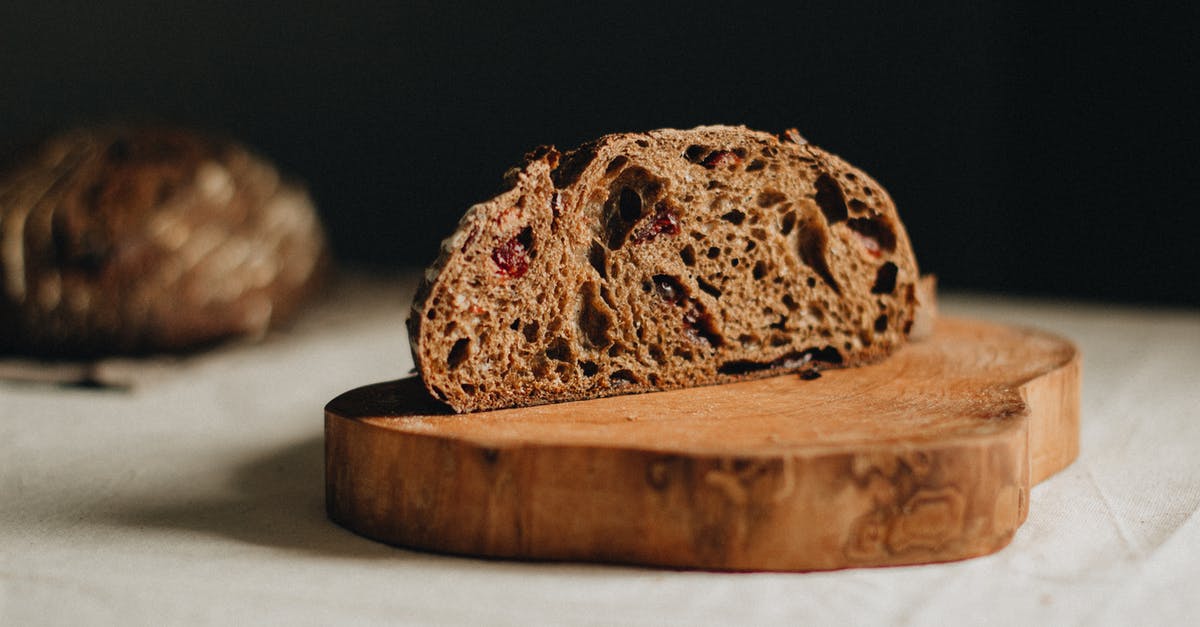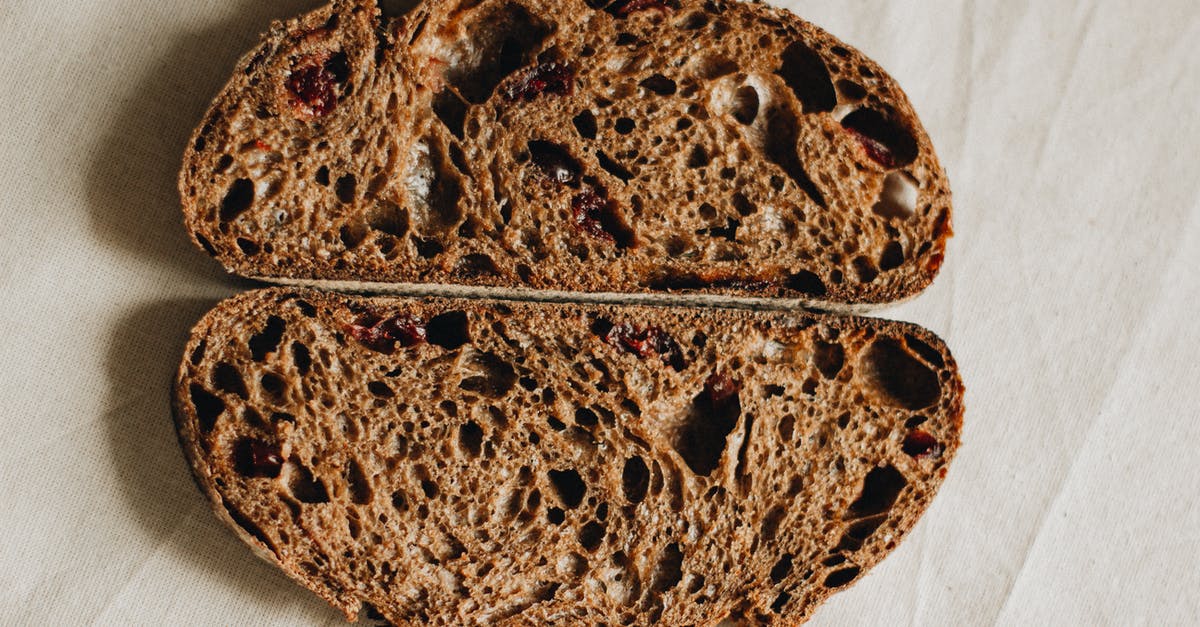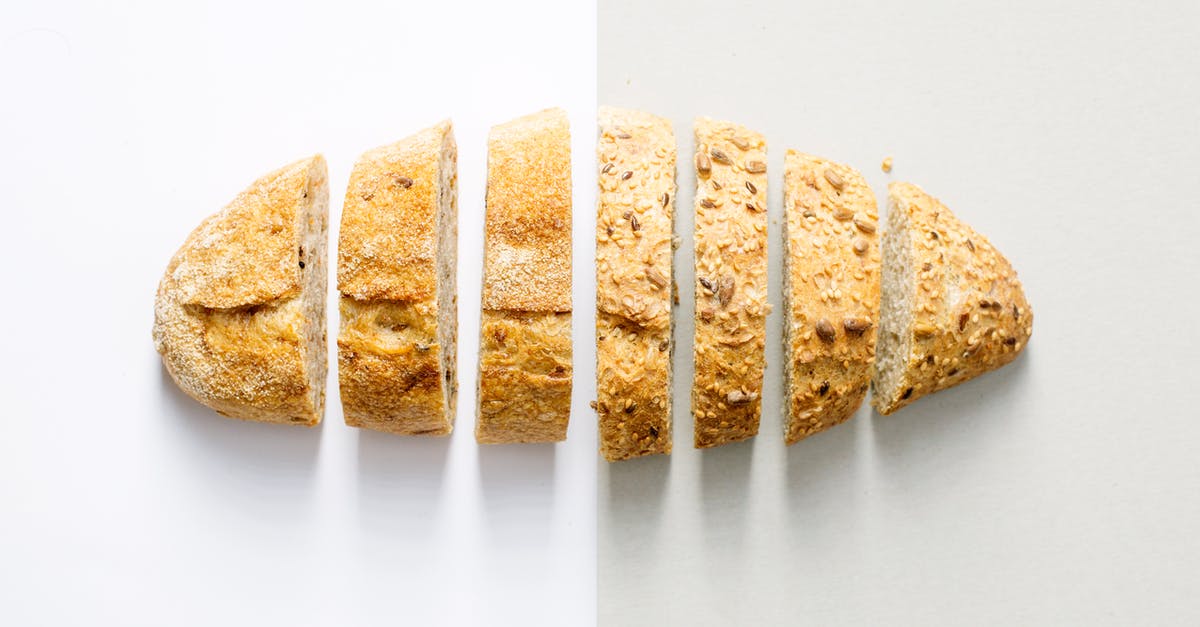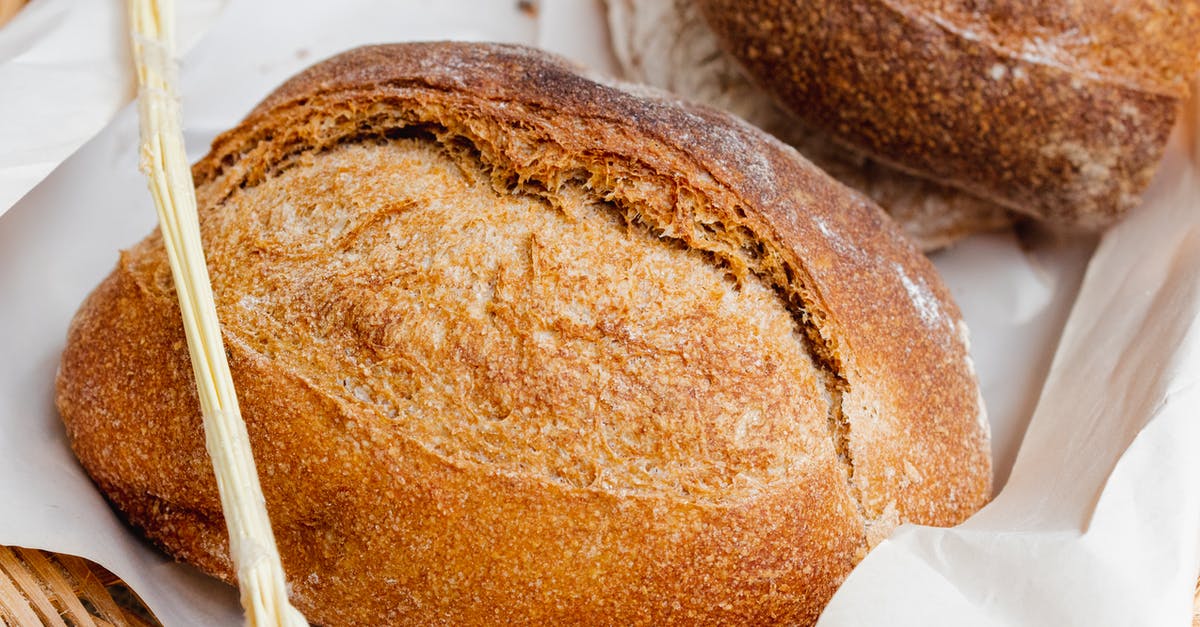100% Whole wheat sourdough bread method

I've recently started making 100% whole wheat sourdough breads and have experienced trouble that the dough wouldn't rise much. I have discovered that this is because of the bran cutting the gluten strands whist they are developing. The solution I have found to this is to sieve the flour and soak the bran, and later incorporate it into the dough. Is there any other method of solving this issue (that doesn't include adding any extra ingredients)? Would just soaking the flour over night do the same?
Best Answer
The first thing I would say is to be sure this is your main problem. Whole-wheat sourdough is tricky, and low dough volume could be caused by a number of things. Perhaps most common is a weak starter: a weak starter will take longer to rise, and whole-wheat sourdough often requires a longer rise even than normal sourdough bread to achieve sufficient dough volume. On the other hand, a rise that takes too long will start increasing dough acidity too much. That not only results in a loaf that can be excessively sour but also will start breaking down some of the gluten and decrease final loaf volume.
I've frankly never had a significant issue with loaf volume with whole-wheat bread once I was sure I had a super-strong starter and started practicing better techniques (stretch and folds during bulk rise to develop more gluten, proper shaping, proper slashing, etc.). I've heard of these issues with "bran cutting gluten," but I personally found my techniques and weak starter were much more significant barriers to loaf volume.
Anyhow, if you're sure the bran/gluten is the issue, there are several ways of solving this problem. As John Dyer's comment notes, Peter Reinhart's Whole Grain Breads book goes over many of these methods in more detail. (I have to admit that I find his recipes to be overly complicated and fussy, though.)
But to summarize:
Do a soaker, which is generally just flour and water (no leavening). This is most effective if done for many hours, often overnight.
Do a mash (or scald), which is like a soaker, except with hot water. They will be more effective and will act faster (though letting stand overnight is still a reasonable practice). Some people actually heat the grain and water directly, but I'd recommend simply pouring hot water over the grain. Many people just use boiling water, but if you are careful not to get the grain too hot (over ~150-160F), natural enzymes will also extract more flavor and sweetness, thus providing an additional benefit.
Do a preferment, which uses part of the flour but also with leavening (in this case, your sourdough starter). There are many different names for them (poolish, biga, etc.), with different consistencies, but they all basically do the same thing.
Any of these -- or a combination of them -- will hydrate portions of your flour (which addresses your problem), will get gluten formation going ahead of time (particularly if you use a smaller water-to-flour ratio in these), and will add significant flavor.
Personally, I've found the best results (good rise with good flavor) came from doing a multi-stage firm preferment for 100% whole wheat sourdough. (That means: I start with a firm dough ball of starter saved from a previous batch (the chef), then gradually build it up by tripling/quadrupling in size a few times every 12 hours before using it to build the final dough. This is close to a traditional method used by old-school French bakers in natural yeast breads in general to maximize yeast growth/gluten development while avoiding excessive sourness. It's not as laborious as it sounds once you get used to it.) If you wanted a sweeter, richer tasting bread, you could also do a mash with some of the other flour before mixing the final dough. But everyone has their favorite techniques.
Pictures about "100% Whole wheat sourdough bread method"



Can you make a 100 wholemeal sourdough?
While you can make this with your regular sourdough starter I have used a 100% whole wheat sourdough starter at 65% hydration to keep the loaf true to it's name. If you don't have one, you can convert one easily by changing your starters flour to 100% whole wheat (but keep in mind it will ferment a bit differently).Is whole wheat sourdough possible?
We love the combination of sourdough and whole wheat. The tanginess of a fed and active starter complements the inherent nuttiness of the flour. Together the two create a perfectly soft and moist loaf ideal for sandwiches, toast, and just about any other bread-based snack.Does whole wheat flour need more water sourdough?
When using whole wheat flour it is necessary to use more water in your dough compared to using only white flour. This is because the germ and bran that are present in whole wheat flour can absorb more liquid than the endosperm.Does whole wheat sourdough take longer to rise?
You'll also probably have to give your whole wheat dough more time to rise than you would white dough, thanks to the heavy germ and bran particulates.Sources: Stack Exchange - This article follows the attribution requirements of Stack Exchange and is licensed under CC BY-SA 3.0.
Images: Marta Dzedyshko, Marta Dzedyshko, Mariana Kurnyk, Bruno Thethe
